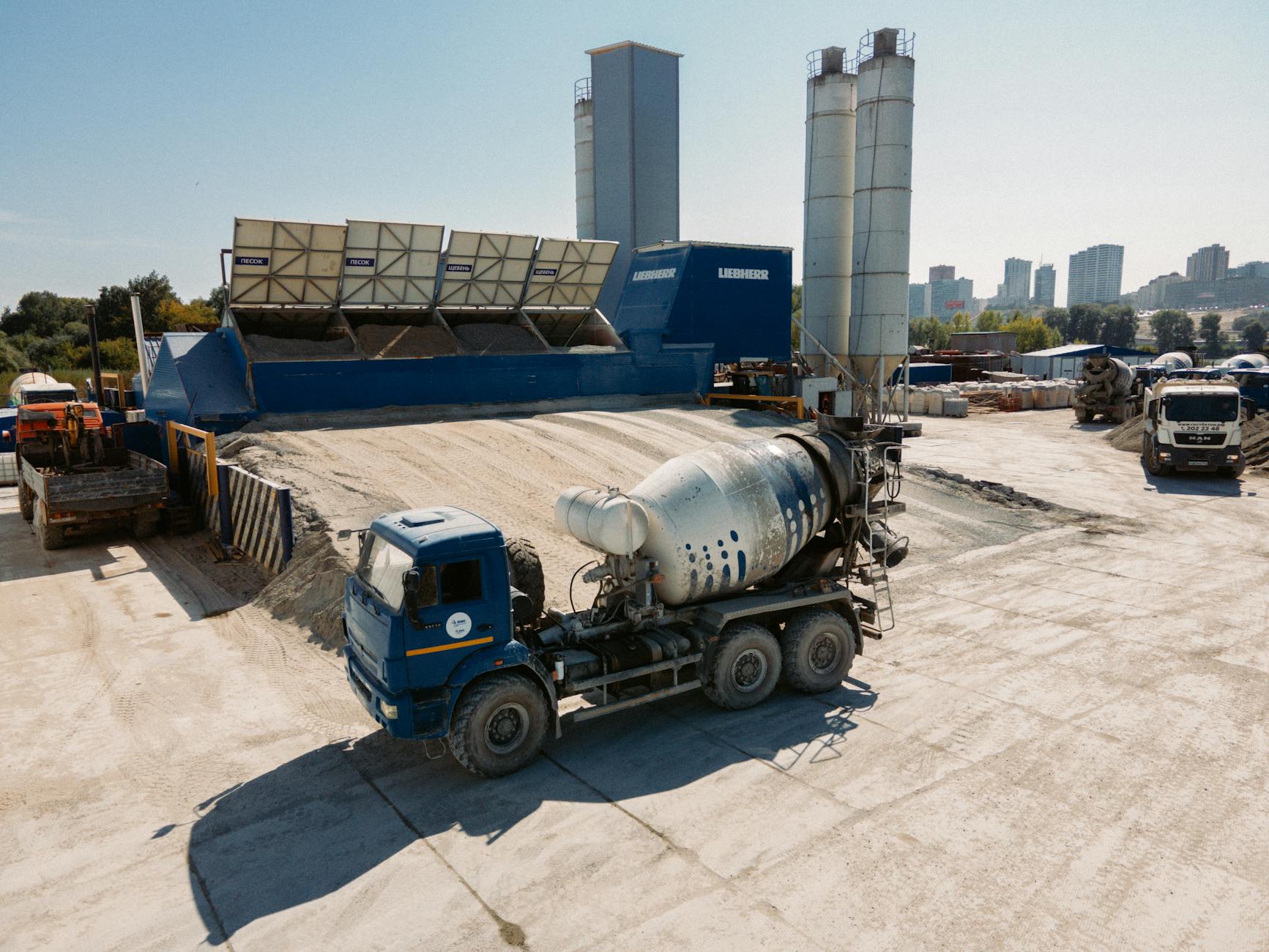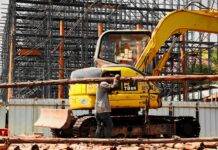
Batching Plant Hazards and Precautions | Free Download PPT
Introduction
Batching plants are essential in various industries, primarily in construction and concrete production. These facilities are where raw materials like cement, sand, and water are mixed to form concrete, which is crucial for construction projects. However, working in a batching plant can expose employees to a wide array of hazards. Ensuring safety in these plants is vital to prevent injuries and accidents that could potentially disrupt operations and harm workers. In this article, we’ll explore the common hazards associated with batching plants and the precautions necessary to mitigate these risks.
What is a Batching Plant?
A batching plant is a facility used for mixing various ingredients, such as cement, aggregates, and water, to produce concrete. These plants are used in the construction industry to supply large amounts of ready-mix concrete for various projects, from roads and buildings to bridges and foundations. There are different types of batching plants, such as:
- Central Mix Plants: Where all ingredients are mixed at a single location.
- Dry Mix Plants: Where dry ingredients are mixed, and water is added during transportation.
Each type has its specific uses and safety considerations.
Common Hazards in Batching Plants
Working in a batching plant exposes employees to several types of hazards, including:
- Mechanical Hazards: These occur due to moving parts of machinery, like conveyor belts and mixers.
- Electrical Hazards: These arise from electrical equipment and exposed wiring.
- Chemical Hazards: These are associated with exposure to cement dust and other chemical additives.
- Physical Hazards: These include slips, trips, and falls, often caused by wet floors or improperly organized work areas.
Each of these hazards must be addressed to ensure a safe working environment.
Mechanical Hazards
Mechanical hazards in batching plants mainly involve the risk of injuries from moving parts such as conveyor belts, mixers, and other machinery. Workers may get caught in or struck by these parts, leading to serious injuries.
Precautions and Safety Measures:
- Guarding machinery: Ensure that all moving parts are properly guarded to prevent accidental contact.
- Lock-out/tag-out procedures: Establish and follow lock-out/tag-out procedures to ensure that machines are powered down before maintenance.
- Regular inspections: Routine checks of machinery to detect wear and tear, preventing unexpected malfunctions.
Electrical Hazards
Batching plants rely heavily on electrical systems to operate machines and tools. Electrical hazards, such as exposed wiring or faulty equipment, can result in shocks or fires.
Safety Practices:
- Proper grounding: Ensure that all electrical systems are properly grounded to prevent electrical shock.
- Insulated tools and equipment: Use insulated equipment to reduce the risk of electrical accidents.
- Regular maintenance checks: Inspect electrical systems regularly to detect faults before they lead to accidents.
Chemical Hazards
The exposure to cement dust and chemical additives in batching plants poses serious health risks to workers. Prolonged exposure to cement dust can lead to respiratory issues, while direct contact with chemicals can cause burns or irritation.
Safety Guidelines for Handling Chemicals:
- Ventilation systems: Ensure that the plant is equipped with proper ventilation to reduce exposure to dust and fumes.
- Dust control: Use dust collectors and wear appropriate masks to protect the respiratory system.
- Proper training: Educate workers on the proper handling and storage of chemicals.
Physical Hazards
Slips, trips, and falls are common physical hazards in batching plants, often caused by wet floors, uneven surfaces, or cluttered work areas. These incidents can lead to serious injuries if not managed properly.
Preventive Measures:
- Flooring maintenance: Keep floors dry and clear of obstacles. Use non-slip surfaces to prevent accidents.
- Clear pathways: Ensure that walkways are well-marked and free from obstructions.
Fire and Explosion Risks
Batching plants may contain combustible materials like chemicals and dust, making them vulnerable to fire and explosion risks. A spark from machinery or electrical equipment can trigger a devastating fire or explosion.
Mitigation Strategies:
- Proper storage of flammable materials: Store chemicals and flammable materials in safe, designated areas.
- Fire extinguishers and alarms: Install fire extinguishers, alarms, and sprinklers in strategic locations.
- Regular fire drills: Conduct fire drills regularly to ensure that workers know what to do in case of an emergency.
Noise Hazards
Batching plants are loud environments due to the machinery and equipment involved in mixing materials. Continuous exposure to high noise levels can result in hearing loss.
Measures to Control Noise Exposure:
- Hearing protection: Provide workers with earplugs or earmuffs to reduce noise exposure.
- Machine maintenance: Regularly maintain machines to reduce excessive noise production.
- Sound barriers: Install soundproof barriers around the loudest equipment to minimize noise pollution.
Workplace Stress and Fatigue
The demanding nature of work in batching plants can lead to both physical and mental fatigue. Long shifts, repetitive tasks, and high-pressure environments can contribute to stress, which affects performance and safety.
Management of Stress and Fatigue:
- Work-rest cycles: Implement regular rest breaks to help workers recover from strenuous tasks.
- Employee support programs: Provide counseling services or stress-relief activities to help workers manage stress.
- Rotate tasks: Rotate tasks to prevent fatigue from repetitive motions.
Personal Protective Equipment (PPE)
Personal protective equipment is essential in mitigating the hazards workers face in batching plants. PPE includes gear such as gloves, goggles, ear protection, and respiratory masks, designed to protect against mechanical, electrical, chemical, and physical hazards.
Correct Usage and Maintenance of PPE:
- Ensure all workers are equipped with the necessary PPE for the tasks at hand.
- Regularly inspect PPE for wear and tear, and replace it when needed.
Training and Safety Protocols
Training is one of the most effective ways to reduce accidents and injuries in batching plants. Workers should be familiar with safety protocols, machinery operation, emergency procedures, and hazard identification.
Essential Safety Training:
- Conduct regular safety drills and workshops.
- Ensure that new employees undergo comprehensive training before beginning work.
- Encourage a safety-first culture within the workplace.
Maintaining Equipment to Prevent Hazards
Routine maintenance is crucial to ensuring that all machinery and equipment are functioning correctly. Preventive maintenance can help avoid unexpected breakdowns and mechanical failures that could lead to accidents.
Preventive Maintenance Programs:
- Develop a schedule for routine inspections and repairs.
- Keep records of maintenance activities to track equipment performance.
Safety Regulations and Compliance
Batching plants are subject to strict safety regulations, including OSHA guidelines, local safety standards, and international safety norms. Compliance with these regulations is necessary to avoid penalties and ensure a safe workplace.
Importance of Compliance:
- Ensure that your plant complies with local safety laws and regulations.
- Conduct regular safety audits to identify and rectify compliance gaps.
Conclusion
Ensuring safety in batching plants requires proactive measures, including identifying hazards, implementing preventive protocols, providing proper training, and maintaining equipment. By addressing mechanical, electrical, chemical, and physical risks, we can create a safer environment for workers, prevent accidents, and improve productivity. A strong safety culture not only protects employees but also enhances the overall performance and reputation of the batching plant.
Monsoon Safety Plan for Construction Site
Safety Engineering in Construction: Managing Risks and Ensuring Compliance
Construction Hazards and Control Measures
FAQs
- What are the most common injuries in a batching plant?
The most common injuries include slips, trips, falls, electrical shocks, chemical burns, and mechanical accidents involving moving machinery. - How can electrical hazards be prevented in batching plants?
Electrical hazards can be prevented by ensuring proper grounding, regular inspections of wiring and electrical equipment, and using insulated tools. - What are the best safety measures for handling cement dust?
Effective safety measures include using dust collectors, providing respirators, ensuring proper ventilation, and conducting regular cleaning to reduce dust buildup. - Why is regular maintenance important in batching plants?
Regular maintenance helps prevent machinery malfunctions, reduces the risk of accidents, and ensures that equipment operates efficiently and safely. - How can workplace stress be managed effectively?
Workplace stress can be managed by implementing work-rest cycles, providing mental health support, rotating tasks to reduce monotony, and promoting a positive work environment.

























Great. That’s a great lesson I have learned.
When ever I found myself as a batch plant, I now know the appropriate measures to observe
Hi
Great knowledge session about Batching Plant Hazards & Risk Assessment.
Nice and very informative
Good knowledge batching plant